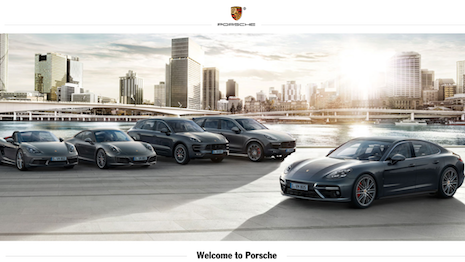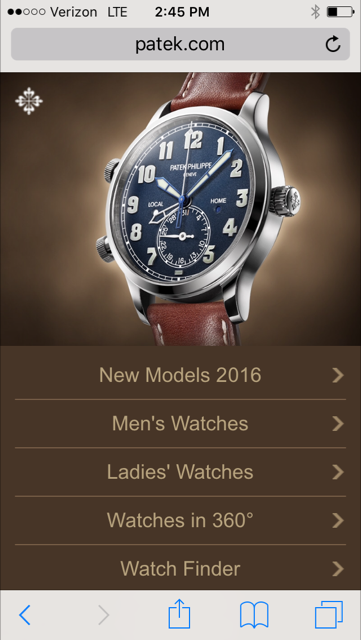
Chanel's Web site: frills with speed. Credits: Chanel
By Dennis Callaghan
The rich may be getting richer, but that may not always enhance the bottom line of luxury retailers.
According to Bain & Company, the global luxury goods market grew by only 1 percent in 2015, and a similar outcome is expected once 2016 is tallied.
Various macroeconomic trends, including decreased European tourism and the China downturn, are factoring into this lackluster growth.
On the dot
Compared to in-store luxury sales channels, ecommerce is proving to be a growing powerhouse.
One recent report examining 73 global luxury brands’ ecommerce sites found online sales grew 16.7 percent in 2015, with further growth anticipated once 2016 is tabulated. This success is likely the one element preventing an overall industry slide backwards into negative growth.
Within this context, exceptional performance – speed and reliability – for Web sites and mobile sites takes on a new level of importance.
Fast, convenient online interactions not only help drive more conversions, but they can also positively influence the decision to shop in-store.
 Door to Dior. Credits: Dior
Door to Dior. Credits: Dior
According to a recent Google study of luxury shoppers in nine countries, while only 7 percent to 19 percent of purchases are made online, more than 90 percent of luxury shoppers use the Web to research products before buying.
Furthermore, a recent Harris Poll survey found more than 50 percent of frequent online shoppers would be less likely to visit a retailer’s bricks-and-mortar store if they have a negative experience on the retailer’s Web site or application.
So how are luxury retailers doing in the area of Web performance?
Our analysis of 25 luxury brands’ fourth-quarter 2016 desktop Web and mobile site performance throughout the United States reveals the following.
Desktop
The top five performers in Q4 were Patek Philippe, Porsche, Rolex, Dior and Chanel. Each site loaded in 2.3 seconds or less.
In Q4, the average median Webpage load time for desktop luxury sites was 3.65 seconds. This represents a noticeable performance decline (23 percent) from Q3, when the average median Webpage load time was 2.96 seconds.
Typically, heavier Webpages translate to slower load times.
In the current case, the Q3 average total downloaded bytes was actually slightly heavier than Q4: 3.92MB versus 3.85MB, respectively.
We noticed the same trend in our recent analysis of non-luxury mobile retail sites.
In Q4, the average median Webpage load time increased by 25 percent, even though pages slimmed down slightly from Q3.
As with the non-luxury mobile retail sites, we expect this performance decline for desktop luxury sites may be attributable to external third-party services – for example, marketing and advertising tags, and personalization services – deployed during the holidays.
 Race to load. Credits: Porsche
Race to load. Credits: Porsche
Physical luxury stores strive to deliver a high-end experience that will end successfully – for example, with a customer spending a few thousand dollars on a new handbag. A knowledgeable salesperson guides the shopper through the store, perhaps even offering a glass of Champagne.
In the online world, however, luxury sites are playing shoulder-to-shoulder with many other retailers, which means they must elevate themselves through a similarly luxurious online experience.
For those high-value shoppers who frequent luxury stores, a personalized online experience can set certain retailers apart from the pack.
Luxury retailers often enlist external third-party services to help deliver these experiences – capabilities ranging from intelligent search and personalization, to live chat and social media services that allow shoppers to contact the company, Tweet them directly, or send a Facebook message.
The challenge with these external services is that many Web sites struggle under their heavy load, and it is common to see performance degradations during peak sales periods such as Q4 and the holidays.
When a third-party service slows down, it can degrade performance for an entire site, or group of sites relying on it.
Mobile
In Q4, the average median Webpage load time for mobile luxury sites was 3.52 seconds.
Like desktop, this is quite a bit slower – 18 percent slower – than the Q3 average of 2.99 seconds.
In Q3, the average page weight was 2.85MB, while in Q4 it was 2.98MB – just slightly heavier, which is not surprising, given the addition of holiday-related promotions and content.
The top five performers in Q4 were Patek Philippe, Porsche, Dior, Chanel and Bergdorf Goodman. All of these sites loaded in less than 3 seconds. Top performer Patek Philippe loaded in less than two seconds.
We expect a large part of this mobile performance decline again may be attributable to third-party services.
Luxury retailers need to keep a particularly close eye on these services, especially on mobile sites, because constrained mobile networks can worsen any negative performance impact.
 Speed shopping at Bergdorf Goodman. Credits: Bergdorf Goodman
Speed shopping at Bergdorf Goodman. Credits: Bergdorf Goodman
While the desire to create a luxurious online experience is commendable, luxury retailers must be careful not to go overboard and always remember, especially in the mobile realm, that speed and convenience trump feature-richness.
Many of the added services that luxury users are apt to use on a desktop site – product reviews and recommendations – may not be needed on a mobile device, when users are busy and on-the-go.
An added level of caution and selectivity should therefore be applied to all third-party services being considered for mobile sites.
Finally, keeping sites as slim as possible is the top way both desktop and mobile sites can maintain and improve performance, but this rule is especially relevant in mobile.
Net net
Overall, luxury ecommerce continues to be a success story.
Considering that 2 to 3 seconds is the current user expectation for site download speeds, luxury brands’ current performance on both desktop Web and mobile sites can be considered sufficient.
But as online increasingly holds the key to profitability for the entire industry, luxury retail sites must continue to strive for improvement.
This will be a matter of striking that critical balance between delivering highly satisfying, personalized features, while maintaining exceptional speed.
Our Q4 analysis revealed that four companies appeared in the top five lists of both desktop and mobile site performers – Chanel, Dior, Porsche and Patek Philippe. These brands clearly are making Web performance a priority and provide strong role models.
 Patek Philippe's site loads in no time. Credits: Patek Philippe
Patek Philippe's site loads in no time. Credits: Patek Philippe
The Internet is the only medium that can reach almost all luxury buyers in all markets.
Leading brands will need to ensure strong Web performance around the globe, helping them tap growing ecommerce theaters such as China and India.
Unfortunately, these regions are the same ones that present unique Web performance challenges for multinational retailers, including the China firewall – which often inadvertently slows Web content from foreign regions – and limited Internet infrastructure in more rural areas.
MOR THIRD-PARTY services, combined with more infrastructure to reach critical geographies, translates to increased Web complexity that luxury retailers will need to manage.
New performance management approaches, which allow IT teams to analyze a growing range of performance-affecting variables and accurately pinpoint the root cause of performance issues will be key for luxury retailers, enabling them to achieve not just sufficient or satisfactory performance, but a consistently excellent digital experience.
 Dennis Callaghan is director of industry innovation at Catchpoint Systems
Dennis Callaghan is director of industry innovation at Catchpoint Systems
Dennis Callaghan is director of industry innovation at Catchpoint Systems, New York. Reach him at [email protected].
 Chanel's Web site: frills with speed. Credits: Chanel
Chanel's Web site: frills with speed. Credits: Chanel
 Door to Dior. Credits: Dior
Door to Dior. Credits: Dior Race to load. Credits: Porsche
Race to load. Credits: Porsche Speed shopping at Bergdorf Goodman. Credits: Bergdorf Goodman
Speed shopping at Bergdorf Goodman. Credits: Bergdorf Goodman Patek Philippe's site loads in no time. Credits: Patek Philippe
Patek Philippe's site loads in no time. Credits: Patek Philippe Dennis Callaghan is director of industry innovation at Catchpoint Systems
Dennis Callaghan is director of industry innovation at Catchpoint Systems